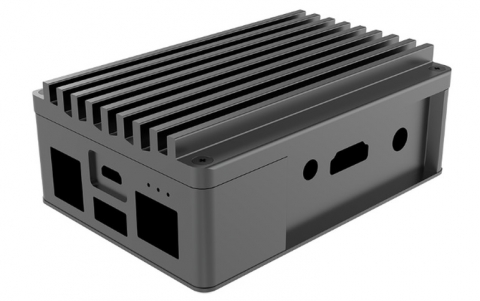
Samsung Now Mass Producing 4Gb DDR3 Using 20 Nanometer Process Technology
Samsung Electronics has started mass production of 4-gigabit (Gb) DDR3 memory using a new 20 nanometer process technology, which saves up to 25 percent of the energy consumed by equivalent modules fabricated using the previous 25 nanometer technology.
Samsung has pushed the envelope of DRAM scaling, while utilizing currently available immersion ArF lithography, in its roll-out of the industry's most advanced 20-nanometer (nm) 4-gigabit (Gb) DDR3 DRAM.
With DRAM memory, where each cell consists of a capacitor and a transistor linked to one another, scaling is more difficult than with NAND Flash memory in which a cell only needs a transistor. To continue scaling for more advanced DRAM, Samsung refined its design and manufacturing technologies and came up with a modified double patterning and atomic layer deposition.

Samsung says its modified double patterning technology is enabling 20nm DDR3 production using current immersion ArF lithography equipment and establishes the core technology for the next generation of 10nm-class DRAM production. Samsung also created ultrathin dielectric layers of cell capacitors with "an unprecedented" uniformity, which has resulted in higher cell performance.
With the new 20nm DDR3 DRAM applying these technologies, Samsung also has improved manufacturing productivity, which is over 30 percent higher than that of the preceding 25 nanometer DDR3, and more than twice that of 30nm-class DDR3.
In addition, the new 20nm 4Gb DDR3- based modules can save up to 25 percent of the energy consumed by equivalent modules fabricated using the previous 25 nanometer process technology.
With DRAM memory, where each cell consists of a capacitor and a transistor linked to one another, scaling is more difficult than with NAND Flash memory in which a cell only needs a transistor. To continue scaling for more advanced DRAM, Samsung refined its design and manufacturing technologies and came up with a modified double patterning and atomic layer deposition.

Samsung says its modified double patterning technology is enabling 20nm DDR3 production using current immersion ArF lithography equipment and establishes the core technology for the next generation of 10nm-class DRAM production. Samsung also created ultrathin dielectric layers of cell capacitors with "an unprecedented" uniformity, which has resulted in higher cell performance.
With the new 20nm DDR3 DRAM applying these technologies, Samsung also has improved manufacturing productivity, which is over 30 percent higher than that of the preceding 25 nanometer DDR3, and more than twice that of 30nm-class DDR3.
In addition, the new 20nm 4Gb DDR3- based modules can save up to 25 percent of the energy consumed by equivalent modules fabricated using the previous 25 nanometer process technology.





















